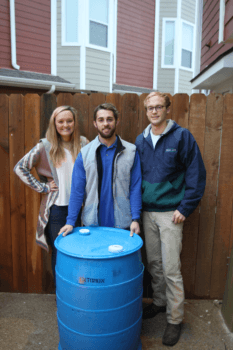Mays Hosts First Sustainable Solutions To Social Problems Case Competition

Texas A&M University students presented their original solutions for judges to some of the world’s most pressing social and economic challenges in early November, when Mays Business School hosted its first Sustainable Solutions to Social Problems Case Competition.
Shannon Deer, senior lecturer in the Department of Accounting, who was coordinator for the competition called the first year a success. “Our teams demonstrated an aptitude for critical thinking skills and problem-solving applied to some of the world’s biggest challenges, such as waste, hunger, malnutrition, inhibited food distribution, childhood poverty, inaccessibility to electricity, the refugee crisis, unfair labor practices and unproductive agriculture practices,” she said.
The competition was the culmination of the newest Applied Business competencies course Business Solutions to Social Problems (BUSN 302) In this discussion-oriented course, students explored social problems of their choice and developed appropriate sustainable solutions.
Each team comprised students from different disciplines from around Texas A&M, including at least one student from Mays. The students spent the semester preparing presentations for a panel of judges that included Kyle Gammenthaler of Mays, and Chris Field and Gretchen Nickson of Mercy Project, a non-profit organization.
First place was awarded to Team Entomon, which included Mays marketing major Garrett Hayslip ’17, Landry Tucker ’16 of Allied Health and Sloane Ansell ’16, a bioenvironmental sciences major. The team won $5,000 to fund their solution, “Entomon,” a stackable insect farm made from a 55-gallon food barrel.
Continue reading on Mays Impacts.
This article by Grant Vassar originally appeared in Mays Impacts.





